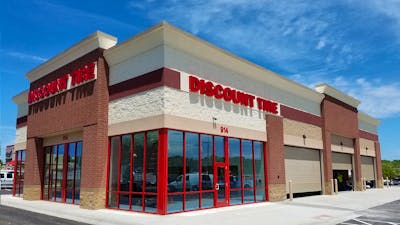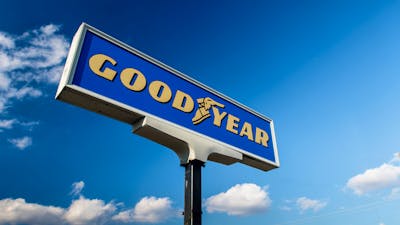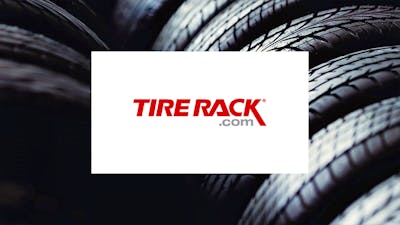Best Tires for the Subaru Outback in 2024
When asking fellow owners about the best new tires for the Subaru Outback, you'll get different answers from different people. Subaru decided on the factory tires that came with your vehicle based on several requirements from engineers, financing, and marketing. A Subaru owner in Arizona who uses the Outback for overlanding adventures may have different priorities than a commuter in New England who drives in the worst winter weather conditions. Your priorities may be quite different from those two types of owners. You may be more interested in fuel economy, a long tread life, performance on or off the road, or with paying the lowest price. Whatever your needs, we’ve got you covered.
Car Talk's Top Tire Picks for the Subaru Outback
Best Overall Tire: Falken ZIEX CT60 A/S »
Best Budget Tire: Riken Raptor »
Best Premium Touring Tire: Michelin Defender2 »
Best All-Season Touring Tire: Michelin CrossClimate2 »
Best Off-Pavement Severe Weather Tire: Falken WildPeak A/T Trail »
Best Alternative Off-Pavement Severe Weather Tire: Yokohama Geolandar A/T G015 »
Best Studless Winter Tire: Michelin X-Ice or Bridgestone Blizzak DM-V2 »
Best Studdable Winter Tire: Cooper Evolution Winter »
Car Talk’s tire experts knows the Subaru Outback inside and out. Your author has owned four Subarus and we have staff members with not just an Outback but who currently own multiple Outbacks.
We who love the Outback know that it is an adventure-seeker’s vehicle. While the Wilderness trim comes standard with some very special all terrain tires, that type of tire can be added to any trim of the Outback, and they work wonders in snow and off pavement. As you view our picks, we will try to give you an understanding of which tire is best at what type of driving, rather than just hit the main price points.
Get the Best Deals on Tires
Have an older Subaru Outback? See tire sizes for previous years.
Best Tires for the Subaru Outback
Riken Raptor - Best Budget Tire For General Purpose Use
The Riken Raptor is a popular budget option for the fiscally minded consumer. This tire maintains high customer ratings, good tread life, and solid all-season traction. The Riken Raptor is a general-purpose all-season tire. This type of tire combines solid handling with year-round performance, allowing for use in wet and dry conditions and also light snow. The Riken Raptor is a good option for the driver who wants a tire that offers stability and durability at a low price point that won't break the bank.
- Good ratings
- Great price point
- Known for durability
- Good for wet and dry conditions
Falken ZIEX CT60 A/S - Best Mid-Priced General All-Season Tire
Car Talk tested the Falken ZIEX CT60 A/S all-season tire this year and came to appreciate its many plusses. This tire was designed specifically for crossovers and SUVs. It combines a smooth, quiet ride quality with predictable handling and good braking performance in wet and dry conditions. If you are looking for a tire that is reasonably priced and can offer year-round use on-pavement, this is the one. The ZIEX CT60 A/S is ideal for those who want a quality tire that will go the distance. The Falken treadwear warranty for this tire is a long 65,000 miles. The price point of this tire is meaningfully lower than some of the specialty picks we have, but a bit higher than the budget tire on our list. Overall, this is a tire that offers great value for Outback owners.
- Good handling
- Quiet ride
- 65K Treadwear warranty
- Car Talk tested and approved
Michelin Defender2 - Best Premium Touring and Commuting All-Season Tire
If you value a quiet ride and are looking for a tire from a company with a stellar reputation for quality and performance, the Michelin Defender 2 is a great choice. In our testing, the Defender 2 offered confident handling, a quiet ride, and great wet-weather performance. This is a tire that you can use for any type of on-pavement driving. If you need a bit more snow-handling capability than a typical all-season tire offers, check out our next pick, also from Michelin.
- Good handling
- Quiet
- Premium branded
- Car Talk tested and approved
Michelin CrossClimate2 - Best Year-Round Tire To Handle Harsh Winters
The Michelin CrossClimate2 does everything one could ask for on-pavement. This tire earns high customer ratings and has created a buzz online in vehicle fan clubs. Drivers who wanted superior snow capability but who were tired of swapping to dedicated winter rubber every year needed a solution, and Michelin stepped up. The CrossClimate2 grips extremely well in even deep snow, but is well-tempered on the highway in all weather conditions. We have tested this tire for almost three years, and found it solves the problem for commuters who need to go out in snow, but who are just not able to deal with owning a second set of winter tires. This tire earns the three-peak mountain snowflake symbol based on its snow capabilities. It earned our thumbs up from real-world testing. If you need any more proof this tire is the real deal, visit your favorite Outback fan club and ask members who have owned it for an endorsement.
- Superior performance in all on-pavement conditions
- Three peak mountain snowflake symbol
- Excellent ratings and reviews
- Car Talk tested and approved
Falken WildPeak A/T Trail - Best Off-Pavement And Severe Weather Tire
Outback owners all love the vehicle's off-pavement capabilities. We know it’s not a hard-core, off-road, mud-whomping Wrangler, but it can for certain get you down an unpaved trailhead road in the spring rainy season, or to your cabin in winter. The Outback is also a great overlanding vehicle. However, standard touring all-season tires are not going to make the most of the Outback’s special abilities. They are just not designed for deep snow or dirt logging trails.
Falken recognized that there was a gap between the all-terrain tire world and the all-season tire world that needed filling. The Falken WildPeak A/T Trail was developed specifically for drivers of vehicles like the Outback. Like the CrossClimate2 above, this tire earns the three peak mountain snowflake, and is great in snow of any depth. This tire also has a rugged sidewall, deep tread grooves, and other off-road features, but in a design that is quieter and more livable than a full all-terrain tire.
We tested the Falken WildPeak A/T Trail tire for two years on a Forester, and fell in love with the tire. It is the ideal way for Subaru owners to step up their vehicle’s capabilities when the pavement ends or is covered in deep snow. Yet, it is livable enough that you won’t tire of it on a long summer highway drive. This tire has been adopted by multiple brands as the OEM choice for their special off-road trims. If you are the type of Outback owner who hoses mud off the roof each summer weekend and lets it turn road-salt-encrusted gray from November to April, this is your tire.
- Three peak mountain snowflake symbol
- Very popular among Subaru owners who go off-road
- Year-round use, but with the bonus of off-pavement and deep snow capability
- Car Talk tested and approved
Yokohama Geolandar A/T G015 - Alternative Pick For Off-Pavement and Severe Weather
We like the Falken WildPeak A/T Trail, but feel that we should point out that Subaru chose the Yokohama Geolandar A/T G015 for its Wilderness trim. This tire is very comparable to the Falken WildPeak A/T Trail and if you want a tire to compare to it, this is the one. Car Talk tried these tires on media test vehicles for two weeks and found them to be a good fit to the Wilderness.
- Three peak mountain snowflake symbol
- Off-road capable
- Year-round use, but with the bonus of off-pavement
- Deep snow capability
Best Winter Tires For the Subaru Outback
Subaru’s legendary all-wheel drive system will nearly always move you forward, but its ability to help you turn is very limited and it won’t help you stop. Since turning and stopping are important, a winter tire can be very helpful for Outback owners who must head out in the worst weather imaginable. While the Falken WildPeak, Yokohama Geolander, and Michelin CrossClimate2 tires on this list are all great picks for snow, they have less capability on ice than a winter tire can offer. If you must drive on ice, consider a winter tire. For the record, “winter tires” is the new term for “snow tires.” Winter tires acquire cult-like followings among users. Part of why so many owners feel that the one they like is so amazing is that they only tried one. All winter tires are great in winter blizzards. Sure, some are better than others, but the vehicle also matters, as does the driver’s confidence and skill.
Michelin X-Ice - Best Studless Winter Tire For Outback
Bridgestone Blizzak - Alternate Choice
Winter tires can come two ways. One type is studless. These tires are not able to accept metal studs, and use a silica-enhanced tread compound instead to offer limited ice grip. These work very well in all but the most extreme situations. If you commute on the highway, these are the way to go, since studs are too noisy to be practical for long drives. Our pick as the best studless winter tire for the Outback is the Michelin X-Ice. If you cannot find Michelin X-Ice tires in stock in your size, try the Bridgestone Blizzaks that fit your particular rim.
- Three peak mountain snowflake symbol
- Highly rated
- Long considered a reliable quality winter tire choice
Cooper Evolution Winter - Best Studdable Winter Tire For Outback
General Altimax Arctic 12 - Alternate Choice
Cooper's Evolution Winter tire can accept studs and has good ratings from users. If you cannot find this tire in stock for your Outback’s rim size, try the General Altimax Arctic 12 Most folks who own studdable winter tires primarily use them for local use. Long-distance driving is not their forte. Studs are loud. Ask your installer ahead of time about studs and take note of local laws.
- Three peak mountain snowflake symbol
- Studdable
- Local use only
Shop Tires Online and Save
Online tire prices are usually less than in store

Original equipment Outback tires
The current-generation of the Subaru Outback has several original equipment (OE) tires, depending on the trim level chosen. The 2.5i Base and Premium models have 17-inch wheels while the other trims have 18-inch wheels;
- The Outback 2.5i Base,Premium came clad in Yokohama Avid GT tires in 225/65R17 102H.
- All Outback models with 18-inch wheels, including the 2.5i and 2.4T models, were sold with Yokohama Avid GT tires in 225/60R18 100H.
- The hot new trim of the Outback is the Wilderness. This off-road focused trim comes standard with the Yokohama Geolandar A/T G015. The tire features a rugged off-road tread, reinforced sidewall, and is rated for severe snow duty. This tire earns solid review scores, and is comparable to the Falken WildPeak A/T Trail tire. Wilderness owners may wish to keep the all-terrain style tires, or swap to a more highway-friendly all-season touring tire, depending on their needs. The 17” size is the same as the Base.
Top replacement tire brands for the Subaru Outback
We’ve recommended top replacement tires in 17- and 18-inch sizes. Each choice is based on budget, but if you read further you’ll learn about other metrics that may also impact your decision. All of these tires mentioned above have ratings of four-stars or higher based on consumer surveys.
When should you replace tires?
When looking at tire replacement, there are two things to consider: the amount of mileage on the tires and how old the tires are. Mileage is a rough measurement of tread life whereas age is a measurement of the chemical breakdown that occurs to tires over time.
These rules apply whether looking at the tires on your Subaru Outback or on any other vehicle in your driveway or garage. Most vehicles have abou 12,000 or so miles per year put on them and the average tread life for a set of tires is around 30,000 to 40,000 miles. Doing the math, most consumers will require tire replacement on their vehicle every three or four years.
Keep in mind that the treadwear, traction rating, and temperature rating on your tire (more on how those work in a minute) are measured and marked by the manufacturer. There are industry standards for how these measurements take place, but there is no private or government regulation of these measurements to verify claims. The best measurement is the reputation of the tire maker and the consumer ratings given to the tires on sites like Tire Rack.
The measurements given for tread, traction, and temperature are part of the Uniform Tire Quality Grade (UTQG) rating that is embossed on the tire’s sidewall. Every tire should have this rating, which consists of a three-digit number followed by two letter sequences. Something like “500 A A” or similar.
This UTQG rating gives a fair amount of information. Using our example above, here’s what we can learn about the tire:
- 500 - This is the durability rating of a tire as compared to a control tire. The control tire’s tread life is 100. The tread life is determined in a test where the tire is used for 11,520 km (7,158 miles). At every 1,280 km, the tire’s tread depth is measured, providing a projected tread life. The higher this tread life number is, the higher the expectation.
- A - The first letter is the traction rating of the tire, measured as AA, A, B, or C. This indicates how well the tire stops in wet conditions, usually tested on wet pavement. AA is the best rating, A is the next-best, and so on.
- A - The last letter is the temperature rating of the tire, as above. This indicates the tire’s ability to withstand very high temperatures for a period of time.
The factory tires on the Subaru Outback in its current generation are Yokohama Avid GT models. The ratings on the 17-inch tires are slightly different than those on the 18-inch ones, so we’ll look at the slightly lower-rated 18-inch tires. These have a 400 BA rating. This means they are good for about 40,000 miles in tread wear and are moderately good at wet stopping and very good at extreme temperatures.
The other consideration for tire replacement that we mentioned was time. Tires are usually rated to last five years before the chemical breakdown could begin to make them unsafe. On the sidewall of every tire made in North America is stamped the letters “DOT” followed by three groups of four digits. The last group of four digits is the date code for the tire. The other digits indicate some composition requirements of the Department of Transportation.
The date code indicates a week and a year. The first two numbers are the week the tire was produced while the second two are the year it was produced. So a tire marked 3217 was made on the 37th week of 2017 or September 11-17, 2017. Tires have an expected lifespan of five years. So this tire would expire on September 11, 2022.
The thing that breaks down quickest in most tires are the chemicals that protect the rubber and other compounds from the sun’s UV rays. Once those are no longer protecting the tire from breakdown, the tire can begin cracking, splitting, or worse.
Why not replace with original equipment tires?
There is nothing wrong with going with original equipment (OE) tires as replacements when the time comes. This is easy, predictable, and a no-brainer. Many choose this route out of convenience. The factory’s choice for tire, however, may not be your best choice for your Outback. You may want better fuel economy, more winter driving safety, longer tread life, or to pay a lower price for your tires. Or some combination of these things.
It’s worth shopping around to see what is available. Beating the wet stopping distance measurement on the stock Yokohama tires on your Subaru Outback is easy to do. Raising that B to an A without compromising the other metrics, for example, may be important to you and worth an extra $10 or $20. Or getting more than 40,000 miles out of the tires may be your priority. This is where shopping around is worth the effort.
Changing Subaru Outback tire sizes
Depending on the model, your Subaru Outback may have 17-inch or 18-inch wheels and require tires to fit those. If you have aftermarket wheels (or are upgrading to them), you may have a different size, but most Outback models will have either 17s or 18s.
When sizing tires, the general rule of thumb is to retain the overall diameter of the tire and wheel no matter how you change other metrics. So, for example, going to a larger sidewall tire (which adds cushion and comfort) would mean dropping to a smaller wheel diameter to compensate. Similarly, going to a thinner profile tire would mean a bigger wheel is required.
Downsizing wheels has some advantages:
- Better ride quality – More rubber and sidewall means more cushion for poor road conditions.
- Cost reduction – Thin profile tires are expensive, so moving to a smaller wheel size for a bigger sidewall likely means lower-cost tires.
- Seasonal changes – Swapping to winter snow tires may be a need and in that case, the tires and wheels need to match.
- Off-road – Smaller wheels off-road means more tire sidewall for cushion and grip off the pavement.
Going up in wheel size has benefits as well:
- Better handling – The slimmer the tire profile, the tighter the road feel and grip.
- Better looks – It’s fashionable now to have thinner profiles and larger wheels.
- Better braking – Lower profile tires usually have larger tread meeting the road which means better stopping distances.
See our recommendations for the Best Extended Warranty for your Subaru Outback
How to read tire sizes
Tire sizes are also an important factor and play into the wheel sizes we talked about above. The Outback comes with 225/60R18 100H tires on its upper-end models. Here’s what those numbers mean:
- 225 - is the width of the tire from one sidewall to the other in millimeters--in other words the tread width. This tire is 225 millimeters wide.
- 60 - indicates the aspect ratio, or sidewall height, as a percentage of the tire’s width. Here it is 60 percent of the tire’s width (or 135mm).
- R - means radial tires. Radials are the most common type of automotive tire. There is fabric woven into the tires to strengthen sidewalls and tread and help the tire retain its shape. These are positioned “radially” so they are strongest while the tire is spinning.
- 18 - is the diameter of the wheel (in this case, measured in inches).
- 100 - is the tire’s load rating, indicating how much weight it can bear.
- H - is the tire’s speed rating. H-rated tires have a maximum top speed of 130 mph.
It’s worth noting that the Outback’s 17-inch wheels are clad with 225/65R17 tires, keeping the aspect ratio between the 17- and 18-inch wheels the same.
In general, there are four kinds of tires available at most tire shops for most vehicles and tire sizes. Which is your best choice will depend on the type of driving you do the most. These four include:
- Touring and All-season tires - provide a smooth ride, good wet and dry traction, decent winter traction, and longer tread life. These tires are acceptable for winter use but can’t be expected to provide the traction and stopping power that a dedicated winter tire can.
- Performance tires - are focused on providing confident handling, better wet and dry traction, and a sporty feel. Their higher grip and speed ratings come with a tradeoff of shortened tread life and reduced ride quality.
- All-terrain tires - are built to maximize off-road traction and provide good durability overall. Their construction means more noise and less comfort on the road, but winter traction and tread wear is acceptable.
- Winter and snow tires - are made with special rubber compounds that maintain grip and pliability when temperatures drop. They are also built with special tread patterns to maximize the vehicle’s ability to start and stop on very slippery roads.
Car Talk Community's favorite tires
Car Talk's very active online Community has many interesting and thoughtful perspectives on the best tire brands in the industry, based on real life user experience and knowledge.
Read more on the Best Tires in the industry according to the Car Talk Community here.
Tire sizes by year
| Year | Trim | Size |
|---|
Shop Tires Online and Save
Online tire prices are usually less than in store

Subaru Outback Tire FAQ
- What’s the best tire for a Subaru Outback?
Most Outback models feature 18-inch wheels, so the Bridgestone Dueler H/P Sport are a solid budget option. The Yokohama Geolandar GO55 is a great mid-priced, long-life option. Bridgestone Dueler H/P Sport AS RFT is a good all-season, long-life choice.
- How long do Subaru Outback tires last?
A lot of that depends on how you drive the vehicle, but any original tire should last 50,000 miles before you should start shopping around. Of course, the best thing to do is not replace tires at a specific mileage, but measure the tread depth and replace them when the tires are sufficiently worn.
- Do Subaru vehicles need special tires?
No, but you may want to choose tires that are geared for how you drive. Spend a lot of time on trails, dirt roads or mud? An all-terrain tire may be a better choice than an all-season. Live in the upper reaches of the Snow Belt? An all-wheel drive vehicle like a Subaru Outback will benefit enormously from a dedicated winter tire.
- What brand of tires does Subaru use?
Subaru uses both Falken and Yokohama as original equipment tires on various models.
- What is the right Subaru Outback tire pressure?
Inside your driver’s side door should be a white and yellow label that will tell you the exact tire pressure recommendations for your vehicle. There should be a “cold” and “hot” rating, which are the tire pressures (in PSI) for tires when cold and when hot. Your vehicle’s tire pressure monitoring system (TPMS) will be calibrated to these numbers.
- How often should I rotate my Subaru’s tires?
This is more about the tire than it is the car. The owner’s manual for your Outback will have recommendations based on the Subaru’s factory tires, but any replacement you have put on may have different recommendations. Most of the time, rotation intervals take place every 5,000 to 7,000 miles or, typically, every oil change. It’s important that this be done to ensure maximum performance and longevity for your tires.
- What is the best Outback tire change kit?
Outside of the original equipment Subaru included with your car, such as the factory scissor jack and lug wrench, you may wish to carry an easier-to-use jack or wrench, some emergency placards or triangles, or some emergency lighting. A flashlight for nighttime tire changes is also a good idea.













